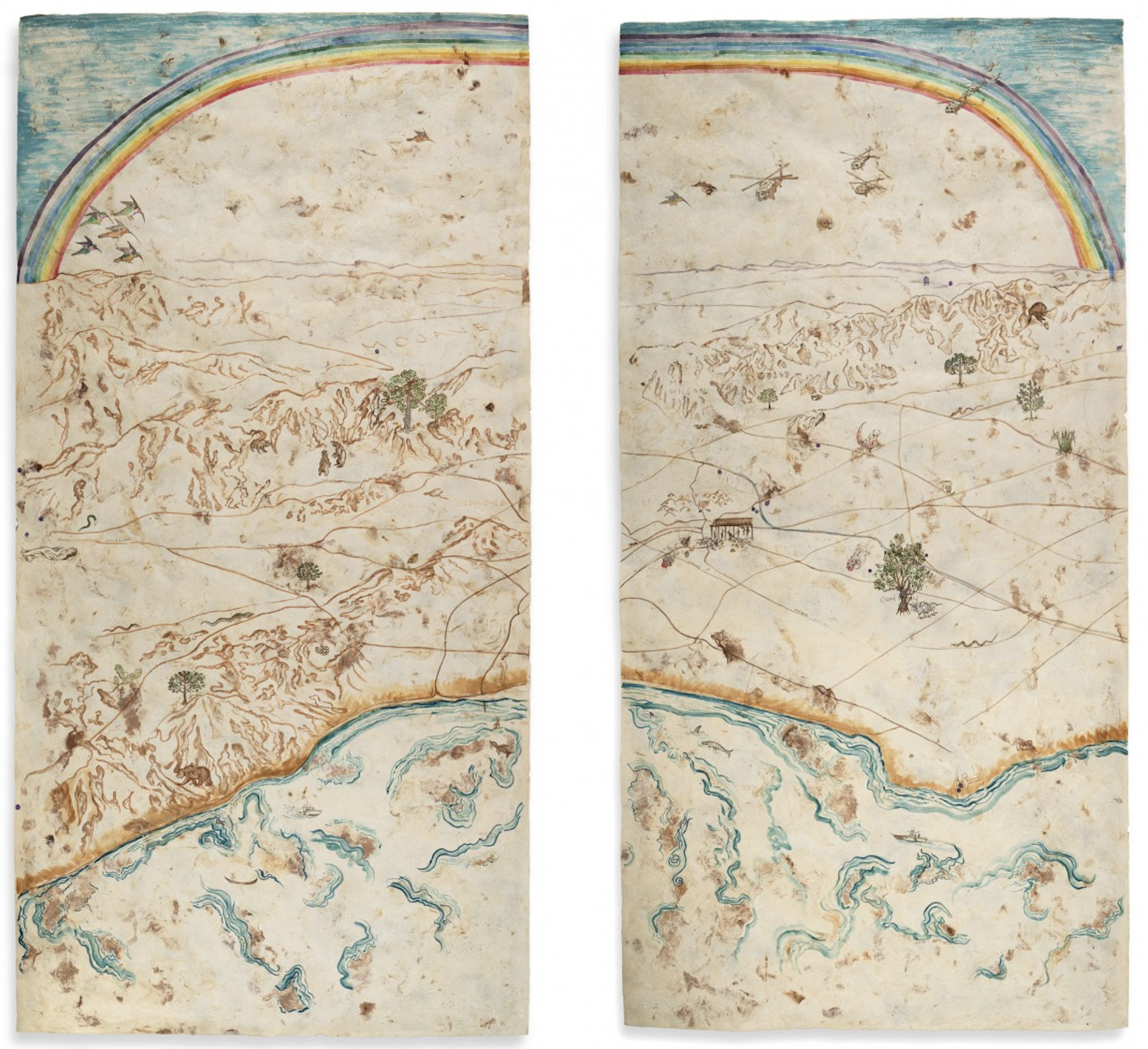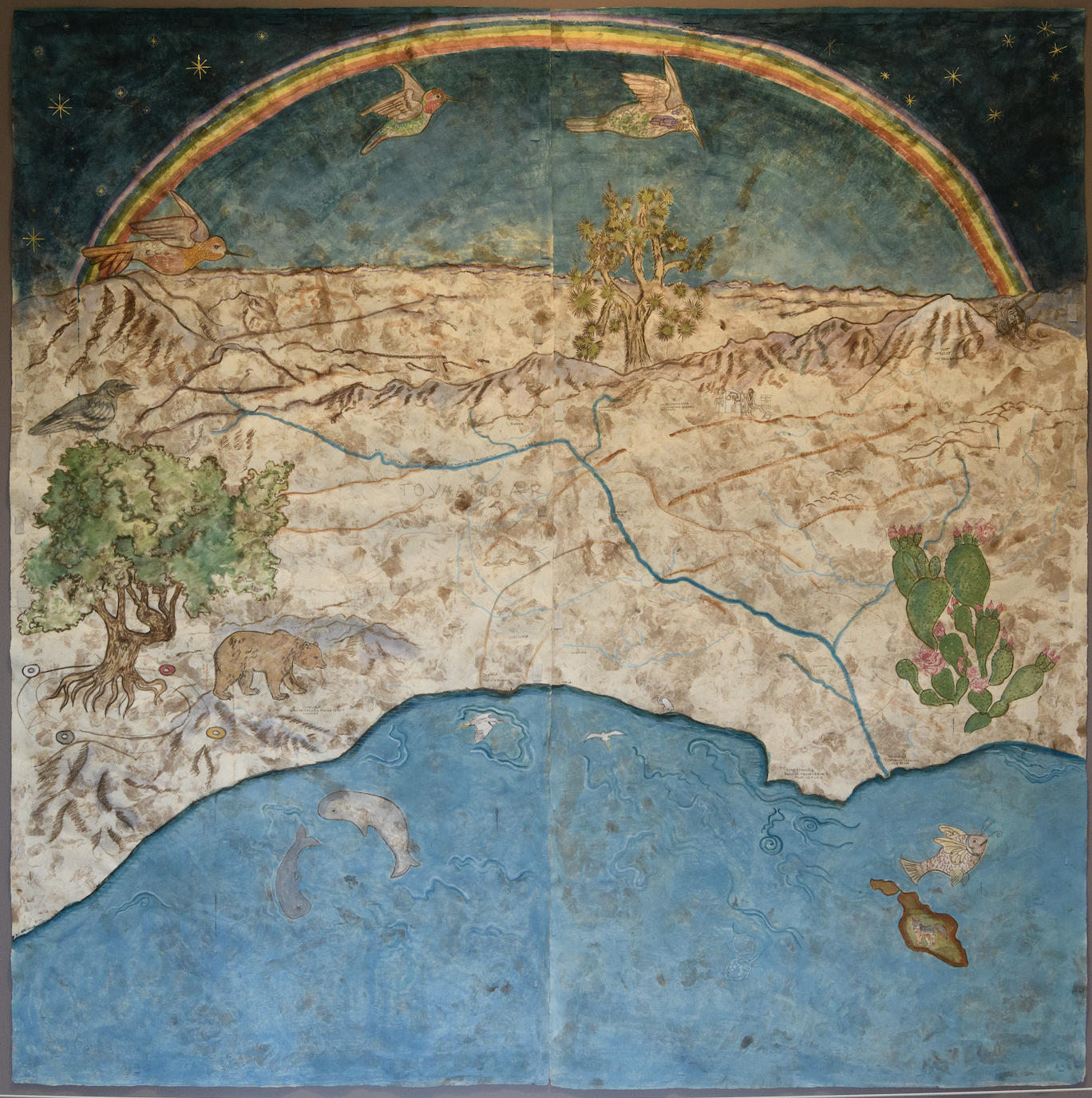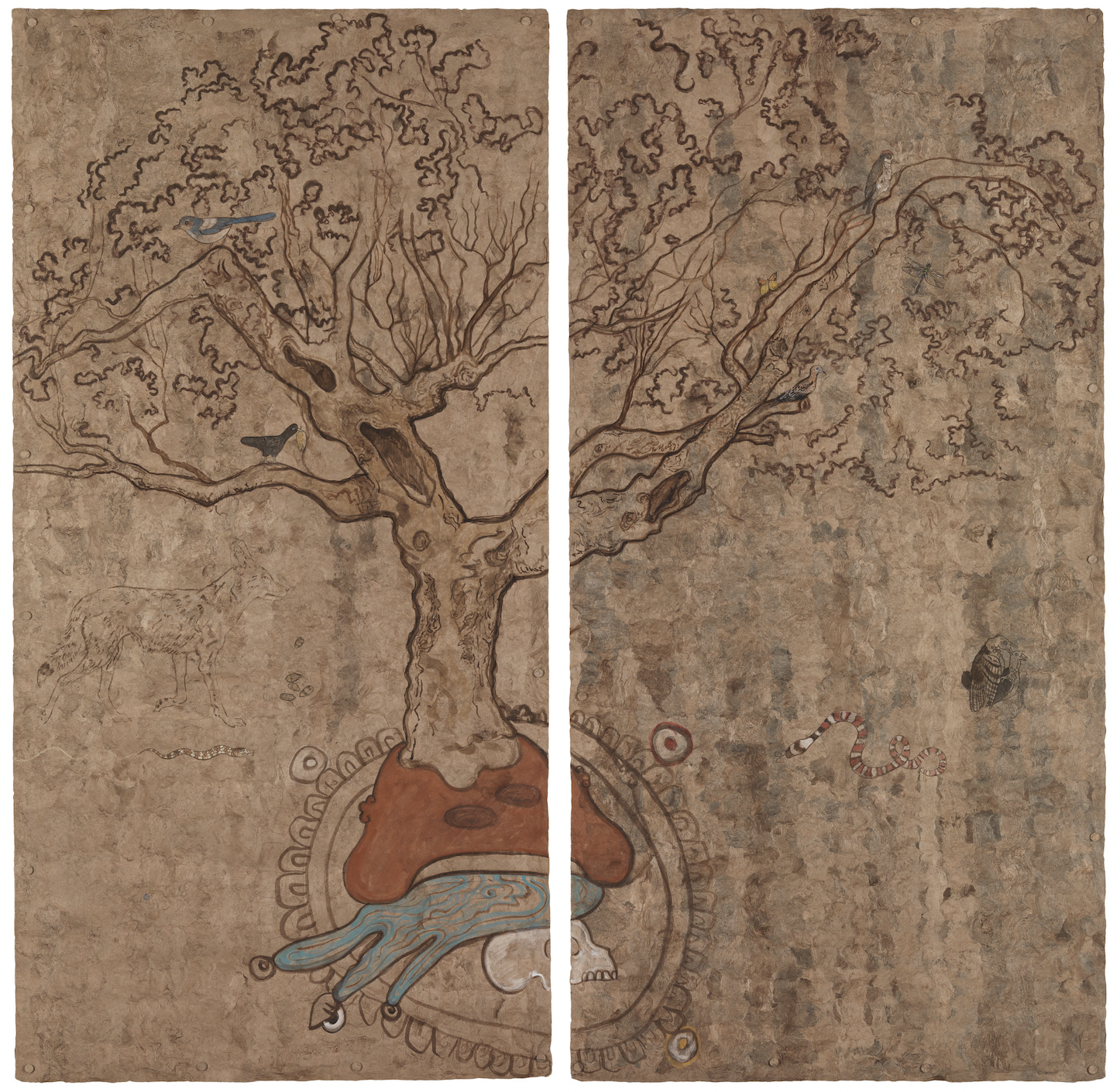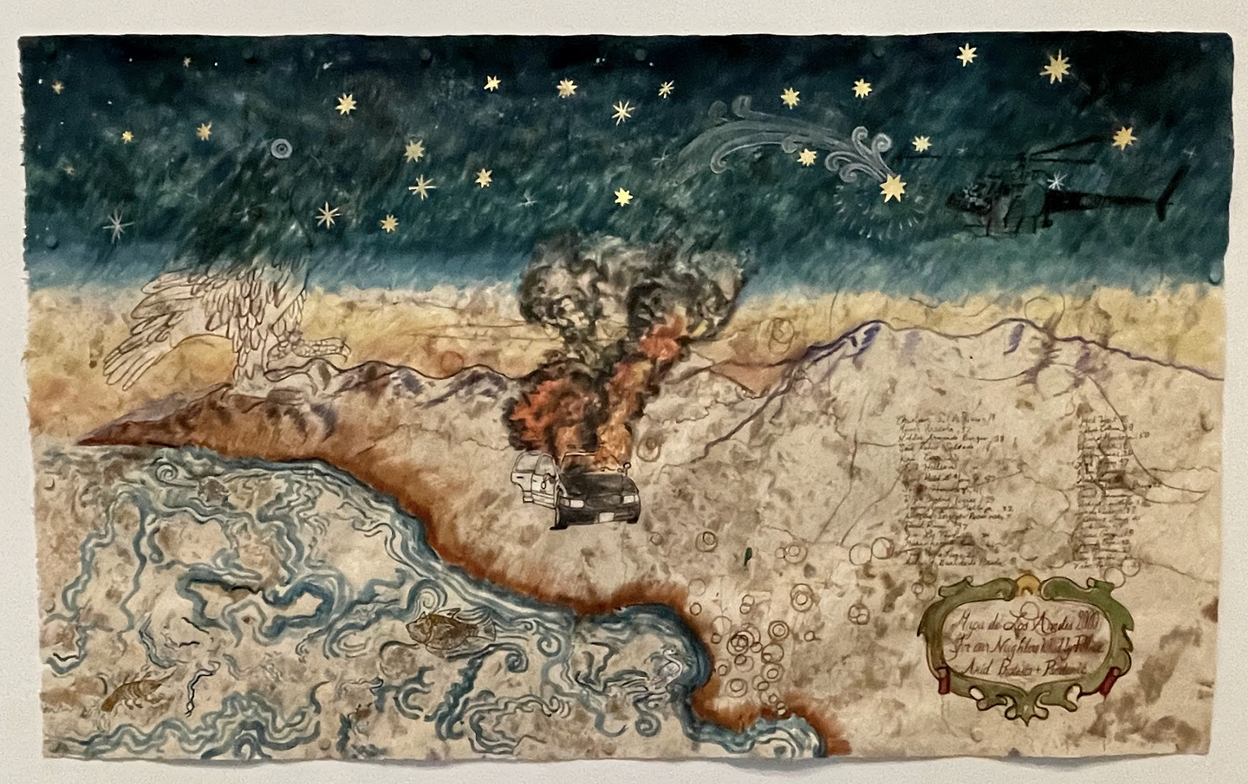







Overview: Maps of the Codex Rodriguez-Mondragón 2017 - on-going
The Codex Rodríguez–Mondragón (2017- ) is a collection of maps and specimen paintings about the ongoing cycles of violence on communities of color by blending historical and recent events. It incorporates hand-processed earth, plant, and insect based watercolor onto the sacred (and once outlawed) amate paper, reclaiming and reaffirming the Indigenous artistic traditions of the Americas. The use of plant materials is significant not only for situating the work within specific floristic provinces but also for their medicinal and healing properties. This makes my maps not simply a representation of the place but objects that serve as an active embodiment of their constituent parts. In my work, a multitude of records, documents, maps and natural materials serve to inform my interpretation of space where various histories are combined, juxtaposed, recovered, and re-envisioned, painted as a codex, a macro and micro view of humanity in relationship with land, time, and power. One of my personal goals is to disrupt western European dominant narratives and challenge audiences with paintings that interrogate legacies of colonial aggression in our daily lives.
My investigation into Indigenous color use in the Americas led me to research the 16th-century Florentine Codex and the history of image- and color-making in colonial Mexico. The Florentine Codex is a twelve-volume encyclopedia compiled by Fray Bernadino de Sahagun and several Indigenous writers and artists, known in Nahuatl as tlacuilos. Working during the middle of the 16th century, they created a compendium of “the things of New Spain,” with parallel Spanish and Nahuatl texts describing deities, plants, animals, and the history of the Spanish invasion in 1519-21. Over 2,000 images accompany these texts, providing a third layer of information.
It is important to mention that the Florentine Codex was created under a colonial regime at a time when their world was changing radically and, in part, under quarantine during the time of a pandemic that wiped out 90 percent of the population.
- Sandy Rodriguez, artist